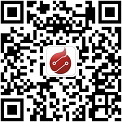The speakers on the market are now thousands of expensive, and you can buy them at a cheap price of 30 yuan. So what kind of speakers are really good speakers? Below I will talk to you about the performance indicators of speakers, I hope these contents can provide you with some reference when buying speakers.
1. Frequency Range
The full name of the frequency response range is called frequency range and frequency response. The former refers to the range between the lowest effective playback frequency and the highest effective playback frequency of the speaker system; the latter refers to the connection of an audio signal output with a constant voltage to the system, the sound pressure generated by the speaker occurs with the change of frequency Increasing or attenuation, the phase changes with frequency, this kind of sound pressure and phase and frequency correlation change relationship is called frequency response, unit decibel (dB). The curves of sound pressure and phase lag with frequency change are called "amplitude-frequency characteristic" and "phase-frequency characteristic", collectively called "frequency characteristic". This is an important indicator to check the performance of the speaker. It has a direct relationship with the performance and price of the speaker. The smaller the decibel value, the flatter the frequency response curve of the speaker, the smaller the distortion, and the higher the performance. For example, the frequency response of a speaker is 60Hz ~ 18kHz +/- 3dB. Sometimes these two concepts are not distinguished, and they are called frequency response. In theory, the harmonic components that make up sound are very complicated. It is not that the wider the frequency range, the better the sound, but this is basically correct for low-end multimedia speakers. The current speaker manufacturers generally label the frequency response of the system to a large extent, and the high frequency part is not very poor, but the label at the low end is extremely unrealistic, so I would like to tell everyone that the low-frequency sound must be heard and do not believe The value on the leaflet.
2. Sensitivity
This indicator refers to the sound pressure level measured at a point one meter in front of the vertical central axis of the speaker plane when a 1W / 1kHz signal is input to the speaker input. The unit of sensitivity is decibel (dB). Every 3dB difference in the sensitivity of the speaker, the output sound pressure is doubled. The sensitivity of the ordinary speaker is in the range of 85 ~ 90dB, and the sensitivity below 85dB is low, and the sensitivity above 90dB is high. The sensitivity of the multimedia speaker is usually lower.
3. power
The indicator is simpler, it feels how powerful the sound from the speaker can be. According to international standards, there are two methods for marking power: rated power and maximum withstand power (instantaneous power or peak power PMPO). The rated power refers to a continuous analog signal with a specified waveform for the speaker within the rated frequency range, the maximum undistorted power that the speaker can emit, and the maximum withstand power is the maximum electrical power without any damage to the speaker. Generally, in order to cater to consumer psychology, merchants usually mark the music power as very large, so when purchasing multimedia speakers, the rated power shall prevail. The maximum power of the speaker is mainly determined by the chip power of the power amplifier, and it also has a great relationship with the power transformer. You can roughly know the weight of the transformer by weighing the weight difference between the main and auxiliary speakers. Generally, the heavier the power, the greater the power. However, the power of the speaker is not the greater the better. The application is the best. For the room of about 20 square meters for ordinary home users, the real 50W power is enough, there is no need to go too far to pursue high power.
4. Distortion
The definition of the distortion of the speaker is basically the same as the distortion of the amplifier. The difference is that the amplifier input is an electrical signal, and the output is an electrical signal, and the speaker input is an electrical signal, and the output is an acoustic signal. Therefore, the distortion degree of the speaker refers to the distortion of the electro-acoustic signal conversion. The allowable range of sound wave distortion is within 10%, and the general human ear is not sensitive to distortion within 5%. It is best not to buy speakers with a distortion greater than 5%.
5. Signal to noise ratio
This indicator refers to the ratio of the normal sound signal played back by the speaker to the noise signal. The signal-to-noise ratio is low, and the noise is serious when a small signal is input. The sound in the entire sound range obviously becomes muddy and unclear. I don't know what sound is emitted, which seriously affects the sound quality. Speakers with a signal-to-noise ratio lower than 80dB (including subwoofers lower than 60dB) are not recommended for purchase.
6. impedance
The index refers to the ratio of the voltage and current of the input signal. The input impedance of the speaker is generally divided into two types: high impedance and low impedance. Generally, the impedance above 16 ohms is high impedance, and the impedance below 8 ohms is low impedance. The standard impedance of the speaker is 8 ohms. The nominal impedance of speakers on the market is 4 ohms, 5 ohms, 6 ohms, 8 ohms, 16 ohms, etc. Although this indicator has nothing to do with the performance of the speakers, it is best not to buy low-impedance speakers, the recommended value is the standard 8 ohms, this is because in the case of the same power amplifier and output power, low-impedance speakers can get a larger output power, but the impedance is too low will cause underdamping and bass degradation and other phenomena.
7. Sound technology
The hardware 3D sound technology is more common nowadays, including SRS, APX, Q-SOUND and Virtaul Dolby. Although they have different implementation methods, they can make people feel obvious three-dimensional effects. common. They apply the extended stereo (Extended Stereo) theory, which is the additional processing of the sound signal through the circuit, so that the listener feels that the sound direction extends to the outside of the two speakers, so as to expand the sound, so that people have a sense of space and Three-dimensional sense, produces a wider stereo effect. In addition, there are two kinds of sound enhancement technologies: active electromechanical servo technology and BBE high-definition plateau sound playback system technology, which also have certain effects on improving sound quality.

Follow WeChat

Download Audiophile APP

Follow the audiophile class
related suggestion
Many people regard audio equipment as purely technical electronic products measured by indicators, just like cold instruments. actually not. Although audio equipment ...
The following takes the French Jinlang 907Be bookshelf box as an example: 1. Withstand power: 9 ...
& n